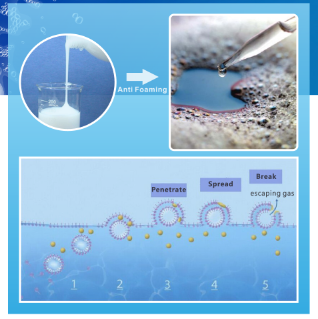I. Cultivation techniques (1) Variety selection Baiyuchun radish varieties planted in Tunliu County, Changzhi City have fewer leaves, standing upright, resistant to twitching, being late in heart, resistant to downy mildew. The roots are all white, long and cylindrical, 22-40 cm in length, 6-10 cm in diameter, and 1 kg in weight. Vc and high sugar content, good flavor, good taste. Premature, growth period 60 days. It can be cultivated in spring and summer. (B), timely sowing spring cultivation using open film mulching cultivation, the implementation of the date of scheduling sowing, beginning on April 7th, after the scheduled order according to the order of every 5-7 sowing, sowing on April 20, sowing every hole 1-2 seeds, 10,000 mu were planted, covered 0.5 cm thick fine soil after sowing, and then covered with plastic film. Summer cultivation does not cover the film, starting from 15 centimeters high ridges, beginning on June 20th, afterwards according to the order plan to sow every 5-7 days, sowing on July 5th, sowing method, density with the former. (3) Field management White spring radish planted in spring will be seeded 4-5 days after sowing, and artificially broken and induced seedlings immediately after emergence. When the seedlings grow to 2-3 leaves, the seedlings are planted, shallow cultivating, removing weeds, and raising the temperature. 20 days after sowing, the radish fleshy root began to expand. At this time, mud blocks were used to hold the film break to prevent the film from being lifted. In the process of growing radish in spring, it is generally not necessary to water the roots. Only the appropriate watering of the surface of the radish is required. The water requirement for radish during fleshy root enlargement period is relatively large, and it can be properly irrigated according to soil moisture. The irrigation time is performed at noon on sunny days and drained after 2 hours. The white jade spring radish planted in the summer, when the seedlings grow to 2-3 leaves, the growth period coincides with the high temperature and rainy season. We must pay attention to the weeding, weeding, and earth-cultivation. The timely drainage after the rain is the key point of management. (D), timely harvest spring planted radish late May to early June, late summer radish in late August to early September. When the fleshy roots mature gradually, they are harvested in batches in time to prevent rooting, black roots, and rot roots from overdue harvesting, affecting commodity quality. When harvesting, the petiole was cut off by 70 centimeters of green stalks, washed and dried and transported by bagging. Second, fertilization technology Fertilization is mainly based on organic fertilizer, and it is suitable for top-dressing; it is mainly composed of multiple compound fertilizers, supplemented by single element fertilizer; and formula fertilization is adopted to maintain the balance of soil fertility. (a), white radish root length, adequate soil preparation before sowing, loose soil, ensure more than 30 cm plough layer. In spring cultivation, 3,000 kg of manure was cooked per acre in the fall and fall of the previous year, 2000 kg of organic manure was applied per acre, and 30 kg of ternary compound fertilizer was applied in spring. When cultivated in summer, the former crop is spinach, early-crop or field crop wheat. First clean up the pastoral area, remove the diseased leaves and stubbles from the former crops, and then burn and destroy the affected crops. Next, use 5,000 kg of high quality organic fertilizer and 30 kg of compound fertilizer. (B), timely fertilizer. With the swelling of the roots of the flesh, timely top-dressing and watering ensure the demand of radish for fertilizer and water. 30 days after sowing, topdressing was performed once. When composting, use 25 kg of compound fertilizer per acre for 0.5% liquid fertilizer to root. Where soil moisture is high, apply 10 cm from the root of the radish. When the leaf photosynthetic area is larger, 0.5% urea and 0.3%-0.5% potassium dihydrogen phosphate are added to supplement the foliar topdressing. Third, pest and disease control We follow the plant protection policy of "prevention first, comprehensive prevention and control" and adhere to the principle of harmless control based on "agricultural control, physical control, biological control, and chemical control." The limited use of pesticides within the scope of green food standards prohibits the use of highly toxic, high-residue, high-bioconcentration, high-tertiary (teratogenic, carcinogenic, mutagenic) pesticides and their mixed pesticides. The main diseases include: soft rot, black rot, and viral diseases. The main prevention and control of aphids and spotted fly are in the spring, and insecticides such as cabbage caterpillars and noctuids must be controlled in the summer.
Anti-foaming Agent we have liquid TIS-382 and powder TIS-381.
It is a Organosilicone defoamer agent. With great anti foam,defoaming ability. No slicking or floating oil.
Consist of Polysiloxane,Silicone Surfactant,white carbon black and Dispersing Agent.
Under the extremely low solubility has very good defoaming effect
With good stability, steady effect during storage life,No stratification under the condition of high temperature.
Anti-foaming Agent Anti Foaming Agent,Liquid Anti-Foaming Agent,Defoaming Agent,Powder Anti-Foaming Agent Jiangxi Tiansheng New Materials Co.,Ltd , https://www.jxtsxcl.com